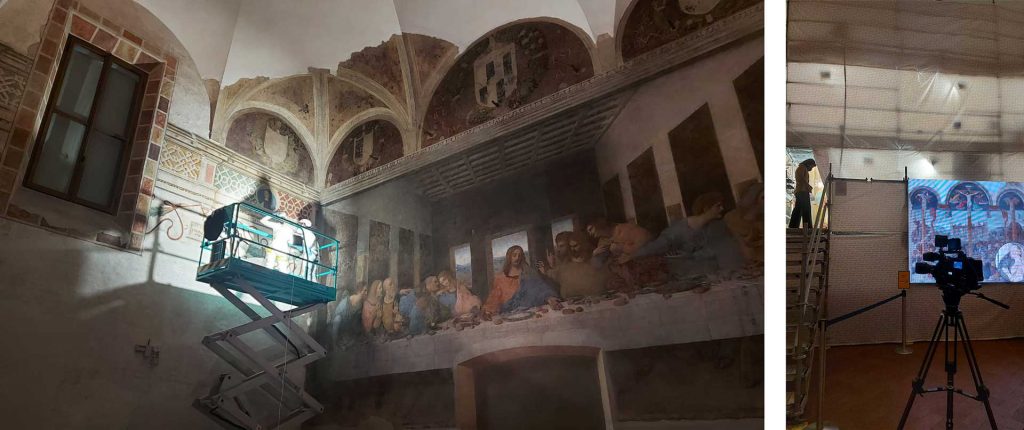The restoration – announced in February 2021 among the priorities of the Regional Directorate of Museums for Lombardy – began on 13 December last, after preparing the challenging worksite and assigning the work to AuriFoliaRestauri in Turin.
The restoration plan was devised by Michela Palazzo, who directed the Museum until shortly before work began. Its direction has been entrusted to Emanuela Daffra, who is not new to demanding restoration projects, assisted by Lorenza dall’Aglio and Silvia Zanzani, an architect who a few days earlier left the directorship of the Castello Scaligero of Sirmione to take over that of Leonardo’s Last Supper.
The restoration, now in its early stages, will concentrate on the great fresco of the Crucifixion, and then continue on the side wall. This wall and the vault have decorative motifs painted from 1488 on, while two decorated lunettes can be seen at either end. The one adjacent to the Last Supper depicts a coat of arms in a garland of leaves and fruit and is attributed to Leonardo himself. Almost certainly by Leonardo are also the portraits of Ludovico il Moro with his wife Beatrice d’Este and his children, set in the lower part of the Crucifixion and now almost completely lost.
As Emanuela Daffra, regional director of museums of Lombardy, explains:

Every aspect of the project, including the preparation of the worksite, has been designed to minimise its impact on that delicate and complex machine that is the refectory, carefully protected from dust and pollutants. Then the various phases have been organised and planned so as to be able to keep the Museum open for its whole duration, with the most complex or noisiest operations being carried out during closing hours. The details of the temporarily hidden fresco are displayed to visitors on a LED wall and the progress of work is recounted on the website with regular updates.